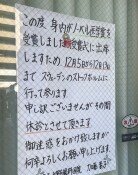Korea’s diplomatic balance tested amid U.S.-China tensions
Korea’s diplomatic balance tested amid U.S.-China tensions
Posted June. 14, 2025 07:00,
Updated June. 14, 2025 07:00
South Korea’s diplomacy can be compared to a clock, with the United States positioned at 3 o’clock and China at 9, South Korean National Security Office Director Wi Seong-rak explained. When Washington and Beijing pull in opposite directions, Seoul must find its place around 1 or 1:30, close enough to the U.S. without alienating China. He placed Australia and Japan, U.S. allies, near 2 and 2:30, while India, participating in both BRICS and the Quad, is positioned around 12:30. Wi emphasized the importance of maintaining a steady course. A clock hand that swings too widely undermines trust, while leaning too far to one side makes it difficult to persuade the other.
Unfortunately, South Korea’s diplomatic direction and consistency have been unstable. Former President Park Geun-hye’s controversial visit to Tiananmen Tower with Xi Jinping and Vladimir Putin placed South Korea near 12 o’clock. Relations with China soon deteriorated over the deployment of the U.S. THAAD missile defense system. The government failed to clearly present the issue as a security matter early on, giving China grounds to accuse South Korea of betrayal. As a result, the diplomatic needle wavered.
Under former President Moon Jae-in, a first-year visit to China helped ease tensions over THAAD, but suspicions persisted that his administration leaned pro-China. The clock hand shifted back toward 12. Near the end of his term, the inclusion of Taiwan and South China Sea issues in a South Korea-U.S. joint statement signaled alignment with U.S. efforts to counter China’s influence. China responded sharply, warning against “playing with fire.” The needle swung once again.
Former President Yoon Suk-yeol moved the clock hand close to 2 o’clock by actively joining the U.S. in countering China. His remarks on Taiwan drew sharp rebukes from Beijing, which warned that those “playing with fire will burn.” Yoon maintained that South Korea must stand firmly with the free world to face China confidently. However, no clear strategy for engaging China in dialogue was evident.
The past decade has seen intensifying U.S.-China rivalry. Caught between the two powers, South Korea’s diplomacy has faltered, with governments veering or oscillating and revealing weaknesses. This has led to U.S. suspicion and pressure, Chinese retaliation, and an increasingly precarious position for South Korea.
President Lee Jae-myung has held calls with leaders of the United States, Japan, and China, signaling a path that stays within the South Korea-U.S.-Japan alliance while avoiding leading criticism of China. However, Lee’s past remarks show some fluctuations in stance. His “xie xie” comment and harsh criticism of U.S.-Japan cooperation suggested a tilt toward 12 o’clock. His shifts during the campaign likely aimed to ease concerns, but whether he will maintain consistent principles remains uncertain.
In Northeast Asia, the U.S.-China rivalry acts as a strong repelling force, intensifying the pull on South Korea from both sides. The U.S. warns South Korea against “decoupling” and urges active participation in containing China. Meanwhile, Xi Jinping’s call to “respect core interests and major concerns” pressures South Korea to avoid criticizing China, especially on issues including Taiwan.
At such a delicate moment, consistency is vital. Once a direction is chosen, whether 1 or 1:30, the clock hand must not swing wildly. Seoul should avoid shifting from kowtowing to China to yielding to the U.S. on a case-by-case basis, as this breeds distrust. Careful principles on sensitive issues such as Taiwan and the presence of U.S. troops can steady the needle. Repeated diplomacy based on these principles builds credibility and allows South Korea to set recognized red lines. This enables others to respect South Korea’s decisions even if they disagree. In this context, every presidential word carries far greater weight than before the election.







